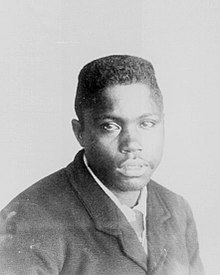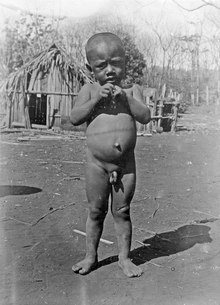The Hova, or free commoners, were one of the three principal historical castes in the Merina Kingdom of Madagascar, alongside the Andriana (nobles) and Andevo (slaves). The term hova originally applied to all members of a Malagasy clan (possibly of the Zafiraminia people) that migrated into the central highlands from the southeast coast of the island around the 15th century and absorbed the existing population of Vazimba.[1] Andriamanelo (1540–1575) consolidated the power of the Hova when he united many of the Hova chiefdoms around Antananarivo under his rule.[2] The term Hova remained in use through the 20th century, though some foreigners transliterated that word to be Ankova, and increasingly used since the 19th century.[3]


In and after the 16th century, slaves were brought into Madagascar's various kingdoms, and social strata emerged in Merina kingdom. The Hova emerged as the free commoners caste below the nobles hierarchy. The subset of Hova related to the king by blood came under the title Andriana.[4] The social structure of the new kingdom became further defined under his son Ralambo (1575–1612), who further subdivided the Andriana into four ranks.[1] Ralambo was also the first to use the term Imerina (land of the Merina) to describe the land occupied by the Hova people, who thereafter gradually adopted the identity and label of Merina.[4]
The warriors and soldiers of the Merina society were traditionally selected from the Andriana caste, or from the nobles. However, in the 19th century when Merina conquered the other kingdoms and ruled most of the island, a much larger army was needed, and the soldiers then included the Hova caste as well.[5] The traditional occupation of the Hova caste was managing rice and crop lands as owners and trading. The labor in the farms and other servitude was the occupation of the Andevo (slave) caste, also called the Mainty who were denied the right to own land.[6][7] A Hova person could be reduced to slavery as punishment for crime or a debt in default, and in this state he would be referred to as Zaza-hova.[8]
The Andriana, the Hova and the Andevo strata were endogamous in the Merina society. According to William Ellis memoir in 1838, a Hova in the Malagasy society was prohibited from marrying a noble or a slave, as well as a Zaza-hova.[9] The exception, stated Ellis, was the unmarried Queen who could marry anyone from any strata including the Hova, and her children were deemed to be royal.[9]
See also edit
References edit
- ^ a b Raison-Jourde (1983), pp. 141–142
- ^ de la Vassière & Abinal (1885), p. 62
- ^ Gwyn Campbell (2012). David Griffiths and the Missionary "History of Madagascar". BRILL Academic. p. 410. ISBN 978-90-04-19518-9.
- ^ a b Kus (1995), pp. 140–154
- ^ Gwyn Campbell (2012). David Griffiths and the Missionary "History of Madagascar". BRILL Academic. pp. 623–624. ISBN 978-90-04-19518-9.
- ^ Gwyn Campbell (2012). David Griffiths and the Missionary "History of Madagascar". BRILL Academic. pp. 63–67. ISBN 978-90-04-19518-9.
- ^ Janice Harper (2002). Endangered Species: Health, Illness, and Death Among Madagascar's People of the Forest. Carolina Academic Press. pp. 105–107. ISBN 978-0-89089-238-1.
- ^ Conrad Keller (1901). Madagascar, Mauritius and Other East-African Islands. S. Sonnenschein. pp. 90–91.
- ^ a b William Ellis (1838). History of Madagascar. Fisher. p. 164 with footnote.
Bibliography edit
- de la Vaissière, Camille; Abinal, Antoine (1885). Vingt ans à Madagascar: colonisation, traditions historiques, moeurs et croyances (in French). Paris: V. Lecoffre. ISBN 3-540-63293-X.
- Kus, Susan (1995). "Sensuous human activity and the state: towards an archaeology of bread and circuses". In Miller, Daniel; Rowlands, Michael (eds.). Domination and Resistance. London: Psychology Press. ISBN 978-0-415-12254-2.
- Raison-Jourde, Françoise (1983). Les souverains de Madagascar (in French). Paris: Karthala Editions. ISBN 978-2-86537-059-7.
- Chisholm, Hugh, ed. (1911). . Encyclopædia Britannica. Vol. 13 (11th ed.). Cambridge University Press. p. 829.